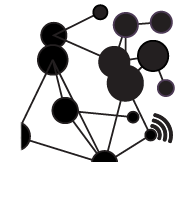Intelligent Buildings have been in operation for decades however it is only in recent years that data from these systems is starting to surface beyond building management systems. The ubiquity of the Internet of Things is changing how we sense and interact with our environment and has led to the emergence of the Digital Twin – a virtual model of a real-life operational entity. Driven by information, these models allow us to monitor operations to head off issues before they arise, or optimise operations based on ever changing human-environment interaction. This research will explore the hidden value of “data as a material” in two new campus buildings to improve efficiency and demand flexibility.
This PhD aims to develop a new method to quantify the social, economic and environmental benefits of capturing, analysing and storing information generated in a digital twin based on analysis of demand management and post occupancy evaluation. Analysis is being conducted on the digital footprint at One Pool Street in UCL East, which has the capacity to generate about 30 million data points per day. The research explores the buildings in the context of operational factors such as improving facilities and the role of a Living Lab environment supporting research and teaching.
The research uses existing data sources from the building to measure operational parameters including temperature, CO2 concentration, and energy consumption. This data is harvested from the range of different building systems available, including the Building Management System, Enterprise systems, and energy management systems. Data is then visualised to support decision making for building managers and users. The figures below show the CO2 concentration for rooms across the building, and the volumetric flowrate for a chosen Variable Air Volume from the 18th – 25th July 2023 respectively.
 CO2 concentrations (ppm) for rooms at UCL East One Pool Street
CO2 concentrations (ppm) for rooms at UCL East One Pool Street
 Volumetric flowrate for VAV1 in room 107 in UCL East One Pool Street
Volumetric flowrate for VAV1 in room 107 in UCL East One Pool Street
By reviewing data such as temperature and flowrates, facilities managers can see if the building is operating as intended, look for ways to reduce energy consumption, and identify maintenance issues early. As the visualisations are being developed, the harvested data is presented to building stakeholders. Stakeholders guide the data harvesting and visualisation process and help identify improvement actions based on the reviewed data. The value of these improvement actions is quantified, and forms part of an assessment of the benefits of digital twins. The calculated benefits are compared to the total lifecycle costs of digital twins, including the cost of their data storage footprint.
This PhD research seeks ways to run buildings more efficiently and sustainably, whilst maintaining or improving occupant comfort. The results should show whether digital twins are a helpful tool in supporting this goal, and how they can be used most effectively.


